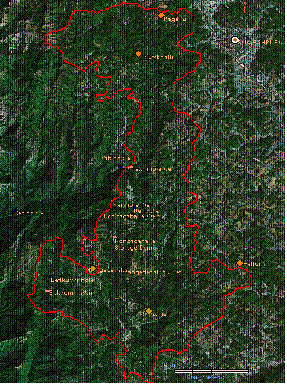
GUNDIA RIVER CATCHMENT

| Summary |
| Introduction |
| Study Area |
| Materials |
| Results |
| Conclusion |
| References |
| Home |
| Summary: |
The Western Ghats of India is identified as one of the richest regions in terms of biodiversity and it is often referred to as a “biodiversity hotspot”. The Western Ghats is the source of 38 east flowing and 37 west flowing river systems. The ecosystem has experienced tumultuous changes due to river valley and other developmental projects in the last 60 years. Inventorying and monitoring the biodiversity and ecology of river basins would help in the formulation and implementation of appropriate conservation and management strategies in the Western Ghats. This report documents the biodiversity and ecological significance of the Gundia river catchment. This region harbours nearly 36% of plant species, 87% of amphibians, and 41% of fishes, which are endemic to Western Ghats. The presence of four critically endangered and 14 endangered animal species in the region further emphasises the need for conservation of this region on priority as it provides a unique habitat and ecological niche. Considering the ecological significance and rich biodiversity, this region can be declared as an Eco- sensitive region as per sub‑section (1) with clause (v) of sub‑section (2) of section 3 of the Environment (Protection) Act, 1986 (29 of 1986) and clause (d) of sub‑rule (3) of rule 5 of the Environment (Protection) Rules, 1986 in concurrence with the provisions of the Indian Forests Act, 1927 (16 of 1927) and Forest (Conservation) Act, 1980 (69 of 1980) the Wildlife (Protection) Act, 1972 (53 of 1972). |
|
CES Technical Report : 116
May 2007
Web : http://ces.iisc.ernet.in/energy |
